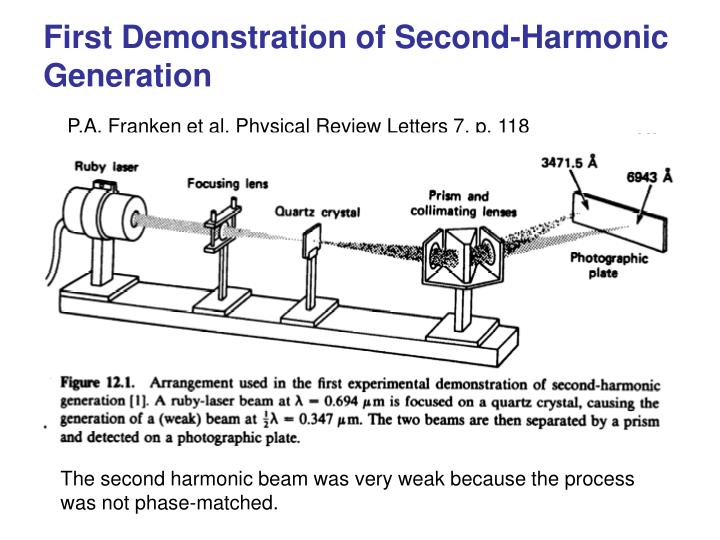

This technology largely solved long-standing problems of confocal microscopy including photobleaching and penetration depth limitations. Multiphoton microscopy (MPM) has revolutionized biological imaging since its modern inception in the early 1990s, where the first breakthroughs utilized two-photon excited fluorescence (TPEF) to probe live cells and tissues. Lastly, we offer perspectives and outlooks on future directions of SHG and THG microscopies and present unresolved questions, especially in terms of overall miniaturization and the development of microendoscopy instrumentation.
#SECOND HARMONIC GENERATION SKIN#
Similarly, we review how THG has enabled developmental biology and skin cancer studies due to its sensitivity to changes in refractive index, which are ubiquitous in all cell and tissue assemblies. Specific examples using polarization-resolved approaches and machine learning algorithms are highlighted. We provide an overview of recent advances showing how SHG microscopy has been used to evaluate collagen alterations in the extracellular matrix and how this has been used to advance our knowledge of cancers, fibroses, and the cornea, as well as in tissue engineering applications. In this review, we discuss the needed instrumentation for these modalities as well as the underlying theoretical principles of SHG and THG in tissue and describe how these can be leveraged to extract unique structural information. Although SHG and THG arise from very different contrast mechanisms, the two are complimentary and can often be collected simultaneously using a modified multiphoton microscope. Second harmonic generation (SHG) and third harmonic generation (THG) microscopies have emerged as powerful imaging modalities to examine structural properties of a wide range of biological tissues.


 0 kommentar(er)
0 kommentar(er)
